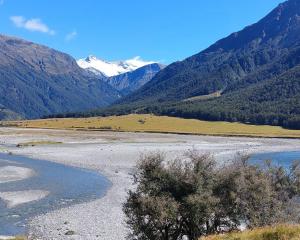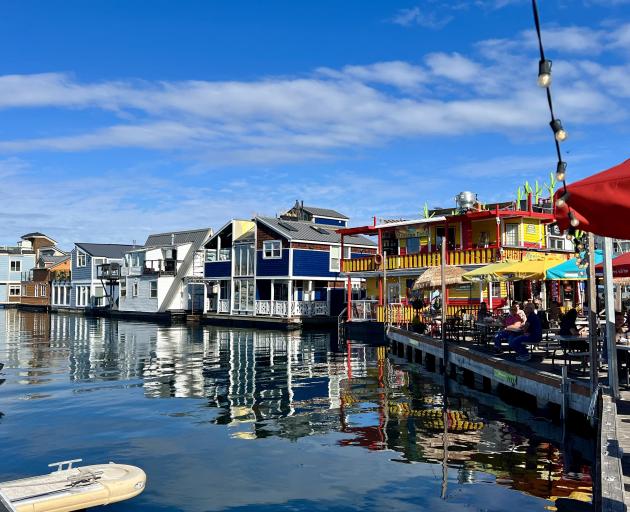
A trip to Vancouver isn’t complete without a side-gig to Vancouver Island.
Given the easy commute across the harbour and the fact the island is a nature lover’s dream, it makes total sense.
The 45-minute ferry transports both cars and passengers and runs like clockwork. With two cafes and a business centre on board, it’s understandable why people opt to live on the island and commute for work.
Despite the population being just over a million, much of it is natural forest.
Victoria, the island’s capital, is adjacent to the harbour and lives up to its reputation as the Garden City. Colourful flower boxes and seasonally planted garden beds line the sidewalks, while hundreds of Red Cedars stretch across the park.
The city has additional appeal for fans of heritage. Carefully restored historic buildings dating back to mid-19th century have been converted to apartments, eclectic design stores and charming English pubs.
The most eye-catching landmark is undoubtedly the Fairmont Empress Hotel, a National Historic Site built in 1908. Resembling a majestic castle, it sits in the park adjacent to the Causeway Marina.
Visitors can stroll around the gardens or take traditional high tea on the patio overlooking the harbour, enjoying bespoke cocktails served in silver teapots.
To my delight I discover the hotel is dog friendly and while waiting at the desk alongside two standard poodles, I spot a French bulldog lapping water from a bowl in the corner. Being a dog-lover, it feels like I’ve died and gone to heaven.
The lounge bar is classically opulent, while the adjoining Empress dining room is akin to a Michelin star restaurant in London. Every detail has been considered with meticulous attention to dietary requirements. The concept behind the Empress is that every guest should feel like royalty, including the pooches.
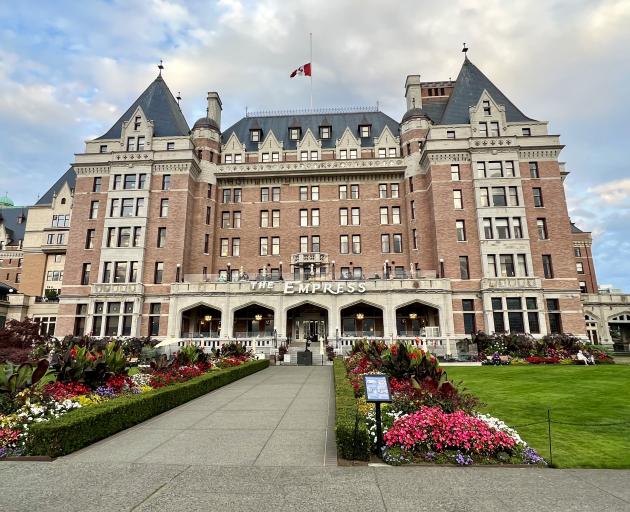
The BC Parliament and Legislative Assembly in James Bay is an impressive government building that offers interior property tours which can be booked in advance.
An ideal way to explore the city while avoiding the hassle of driving and parking, is the option to cycle.
I make a brief stop at Pedego Victoria to rent one of their state-of-the-art e-bikes. Although there’s an opportunity to have a guide there’s really no need as Victoria is all about parks, gardens and heritage architecture.
We hit the cycleway and reach Beacon Hill Park, a beautiful respite close to the city to cycle or walk around. Various pathways connect meticulously landscaped gardens and ponds.
Squirrels race up and down rows of Coastal Redwoods that can grow up to 30 metres tall.
It’s totally understandable that locals find their way here, given how uplifting it is.
We leave the city behind and head towards Fairfield, passing rows of beautiful coastal homes with landscaped gardens. I catch sight of what looks like a few rusted statues on the lawn and do a double take as they inch slowly forward.
Two large deer amble into view with a small doe following closely behind. They nibble on shrubs, barely footsteps from the front door. I spot the owner watching from his balcony and call out "I love your deer garden!"
"They’re a pain in the ass, eating all my new plants!" he yells back.
The scene repeats itself as I cycle on and discover the roaming deer are part of the natural environment here.
The coastline all looks very similar, a mix of sand and pebble strewn with driftwood.
Birdlife is thin on the ground here, other than crows in the central city, there’s very little else. We stop to watch some otters sunbathing on the dock at Oak Bay Marina.
To satiate an interest in heritage architecture, we cycle to Craigdarroch Castle, one of Victoria’s historic sites. The mansion was built in the 1890s for Scottish immigrant Robert Dunsmuir, Vancouver Island’s legendary coal baron.
It’s a quick walk around the exterior, but other than its sheer enormity, unless you have castle-fetish, it’s not hugely appealing.
To understand more about how the Dunsmuir family once lived, there’s an option to take the interior tour.
Vancouver Island is proud of its local farming community and there’s a wide selection of organic food stores stocking locally made grocery products.
It made me consider how New Zealand — an island nation — has become increasingly dependent on multi-national grocery chains with imported goods, instead of supporting authentic local farmers, producers and growers.
Fisherman’s Wharf Marina is touted as the best place for fresh beer-battered fish served straight from tin sheds on the wharf. It’s no frills, but certainly lived up to the reputation for freshness.
More interesting however, was the number of colourfully painted tiny homes perched on the edge of the wharf complete with rope hammocks, gas cookers, herb gardens and kayaks.
With just a few hours left in the afternoon we take a drive to Brentwood Bay to visit the Victoria Butterfly Gardens and The Butchart Gardens.
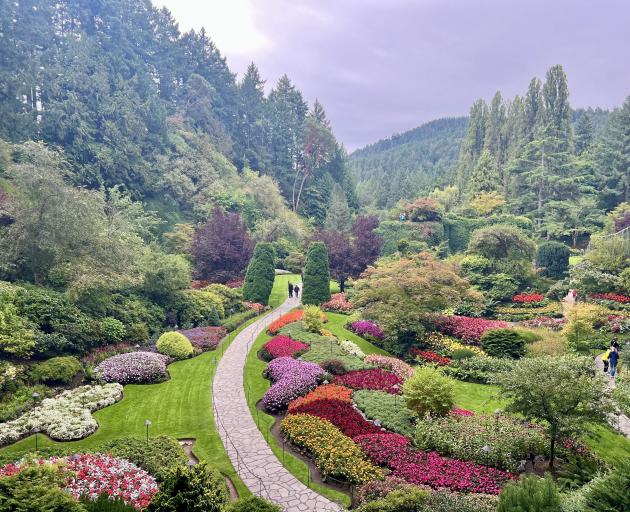
The Victoria Butterfly Gardens is essentially a tropical jungle, home to all kinds of exotic animals and insects. The concept is to get up close and personal to the animals and the guided tour will help explain more about their specialised habitat.
The park is easy to navigate especially for families with kids and the opportunity to watch butterflies emerge from their chrysalis is a unique experience in itself.
A five-minute drive down the same road is the national historic site, The Butchart Gardens.
Jennie Butchart planted the first garden in 1904 with the vision to beautify an abandoned limestone quarry.
The 55-acre (22-hectare) property encompasses rare and native trees together with exotic plants and flowers from all over the world. Most have been collected over the past century during the family’s travels.
The park is divided into various areas that include the Sunken garden, Rose garden, Italian and Japanese gardens. At the end of the Sunken garden is the impressive Ross fountain, where the water rises up 21 metres in a sequenced display of dancing water patterns.
You could easily dedicate half a day here, there’s much to see and discover.
Heading back downtown, we stop to admire the city’s carefully preserved architecture, including the Old Victoria Custom House built in 1875.
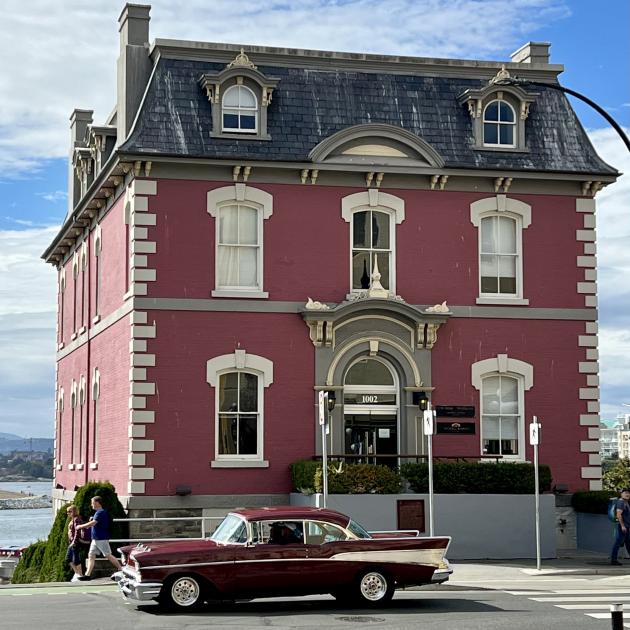
It’s impossible to visit this district without a requisite stop for cocktails at the outlandish LGBTQ2 lounge, Friends of Dorothy. It’s the perfect finish to a stint in Victoria.
I’d been told the best place for outdoor adventures including ocean kayaking, surfing and boating, was the small coastal town of Tofino on the east coast of Vancouver Island.
We break the four-hour drive on the Pacific Rim Highway with a stop at the Rainforest Trail, a two-kilometre walk through old-growth rainforest. The boardwalk traverses through gigantic trees and old felled logs carpeted in moss and tiny ferns.
The island is renowned for its myriad parks and forests. Regardless of where you go there’s almost always an opportunity to hike. It’s generally advisable to purchase a day pass at the local Visitor Centre to enable parking in the National Park Reserve.
We make another stop at Cathedral Grove in MacMillan Park to do the short loop walk through giant Western Red Cedars, several of which are now 800 years old.
Between Ucluelet and Tofino there are a number of beaches, Long Beach and Wickaninnish being the most popular for surfing. We stop to watch the surfers in ultra-thick Neoprene and sample the local fare from food trucks selling fresh Tacofino (fish tacos) and fried poutine, a Canadian staple made with fries, cheese and gravy. I unreservedly prefer my fries with nothing but salt.
With just a couple of days in Tofino, getting out on the water was a priority.
There are adventure operators that do short trips on the water, but West Coast Aquatic Safaris offered a tour that tracks all sorts of marine life, including an afternoon at the unique Natural Hot Springs.
This coastal area is recognised as a Unesco protected Biosphere Reserve. The diverse range of ecosystems range from temperate coastal rainforest to old-growth conifer forests and rocky coastal shores.
The air is crisp and the water has a definite chill, fairly constant all year-round here.
The two most common fish to be found are Halibut and Cod which the seals and sea otters feast on.
Once you spot them in the water, you can watch the otters popping their heads up at various intervals. They swim to this area from Alaska and dive to great depths to catch fish or feed on kelp.
The area once had a thriving Grey whale colony but they were hunted close to extinction and the odds of sighting them are sadly slim.
As we pass by Whale Island I see groups of harbour seals sunbathing on the rocks.
Described by the locals as "rock sausages", their day runs along the lines of eat, sleep, repeat. Fortunately they have ample blubber to stay warm while foraging in the freezing water.
We pass a couple of salmon farms that transition into full swing through spring and summer.
After an hour at sea, I’m beginning to suspect I could be a victim of the marketing hype and unlikely to sight a whale. Then minutes later we hear a shout from someone on the viewing platform at the front of the boat.
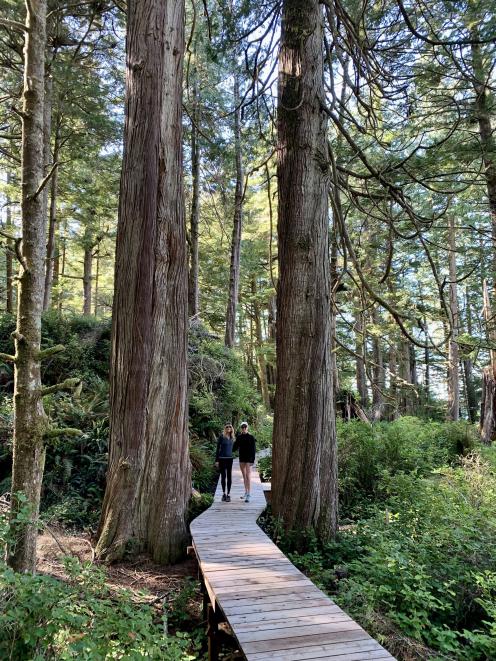
The moment repeats itself again a few minutes later as the boat captain follows the Gray whale, keeping a respectful distance.
It’s a phenomenal sight and if it happened to be the only time I’d ever get to see a whale in real time, it would be enough.
After exploring Clayoquot Sound, we dock at Maquinna Provincial Park and follow the boardwalk through the old-growth rainforest in the direction of the Hot Springs Cove. We reach the clearing to discover what could only be described as Mother Nature’s spa.
Naturally carved into the rock face the geothermal springs form a random succession of pools. As the tide rises, cold sea water runs into the channel causing temperatures to range from cold at the bottom pool to very hot at the top.
Clambering down the rocks we submerge into one of the smallest and warmest pools.
Other than the sound of water trickling from the waterfall above, there’s the faint sound of the ocean lapping on the rocks below.
We are entirely cocooned by nature and it’s without doubt the most therapeutic feeling in the world.

